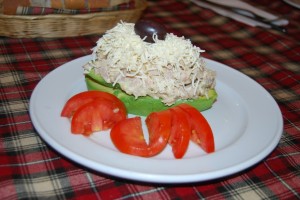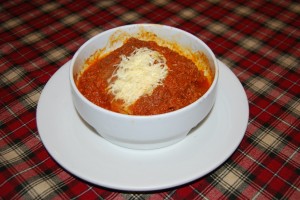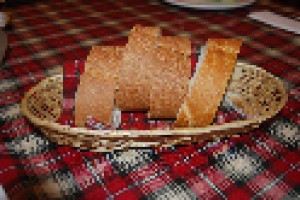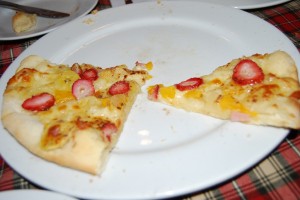Italy on the path of the Sun

If there is a single main corner in Cuzco, one that seems to anchor most things, it has to be where the Avenida El Sol– the Sun Avenue–bumps up against the buildings of the Plaza de Armas, the Main Square. One could speak of the rising sun coming up the Avenue, as in Cuzco past, but then one would have to face the market complexity of modern Cuzco. Even though in the Day of Cuzco celebrations or in Inti Raymi, this corner was key, nevertheless in it the Sun runs up against a corner occupied by a long-lasting Cusco trattoria, as if the Italian Columbus interrupted the Inca sun.
Trattoria Adriano, following that adage that location is everything, has become a Cuzco institution. Modest and comfortable, its large windows show passersby a restaurant of red-checked table cloths that is almost always busy. Tourists from around the world can be seen digging into lasagna, scarfing a pizza, or lifting a bite of tender beef.
Present for more than twenty years, in a rapidly changing restaurant market, Trattoria Adriano is simple success. And, as such, it is a comfortable hybrid of Italian and Peruvian of a time and place that though somewhat dated still has resonance and draw.
This is not the fusion of a trumpeted foodie movement nor the self-conscious and pretentious adaptation of Andean ingredients and dishes to culinary training. It is a different and earlier hybrid, one that serves with margarine sliced rounds of what in some places is simply called a flute, a long, narrow and crusty white bread. And yet, its location and food keep drawing people in.

Italian is not new in Peru. It arrived for the first time along with the Spanish invaders. Italians participated in the Spanish forces that grabbed and imprisoned the great emperor Atahualpa. Shortly before the dramatic events in Cajamarca, Peru that led to the end of the Inca Empire, Spain had conquered the Duchy of Milan in Italy’s north and established an alliance with Genoa.

Along with a Sicily ruled already the Crown of Aragon, this meant that Spain not only ruled or was influential in a good part of the Italian Peninsula, it signified that Italians were part of the Spanish colonial forces in America.
Furthermore, sailors from the port of Genoa were common in the ships that moved from the port of Callao, just outside Lima, to the rest of the Spanish Pacific.
While this provided a base, toward the end of the colonial period, immigration from Italy to Peru picked up and continued into the twentieth century, the same time the large Italian communities were established in the US and in Argentina and Brazil.
Italians influenced Peruvian gastronomy, because of this long history. But it is a curious influence that needs study.

Creole Peruvian cuisine developed a dish based on Pesto that is argued to have appeared because most of the Italians who came to Peru were from Liguria, the official home of pesto with basil, and especially from the main port city of Genoa. The dish crossed into coastal creole cuisine, probably as it was becoming modernized and codified in the twentieth century, well before pesto became an international phenomenon.
I argue for this timing because in Peru they did not follow the current code for pesto of basil, pine nuts, garlic, parmesan cheese, and olive oil. Instead, in Peru it became a sauce of basil mixed with spinach or sometimes just spinach.
Furthermore, the pasta dish became combined with a pan fried steak or chicken to make a dish acceptable with the Peruvian aesthetic.
This dish was simply called green noodles. It was contrasted with another called red noodles whose sauce was made from tomatoes, to be sure, with ground red aji to give it weight and spice.

In the US the basic tomato sauce became the famous marinara, not something found prior to that in Italy, while in Peru the sauce developed differently following local aesthetics.
But, these dishes depended on pasta — in this case a kind of fettuccine — being widely available. This happened when Italian families, which had a long history as purveyors of groceries on the coast, began industrial production of pasta and mass marketing it to an urban market as such was developing in the beginning of the twentieth century.
Adriano shows some of this history in its lasagnas and pastas, such as the pasta with red sauce served with a tender beef loin steak wrapped in bacon, and in its soups and appetizers. These fit the creole style.

But Trattoria Adriano also shows the invasion of pizzas around the world, impulsed by the mass marketing of North American food. These hit Cuzco strongly in the eighties and remain a stalwart of the food market with various changes and improvements.
Trattoria Adriano is a success and well worth the visit because of the experience of something as if out of time. Though from the eighties synthesis, it carries that feeling of timelessness.
At the same time as the red checked table cloths give a feel that says ma and pa Italian restaurant anywhere, Adriano is definitely Peruvian. And yet the tourist feels at home here where the sun rises up the street to shine on commercially marketed Little Italy in Cuzco.





